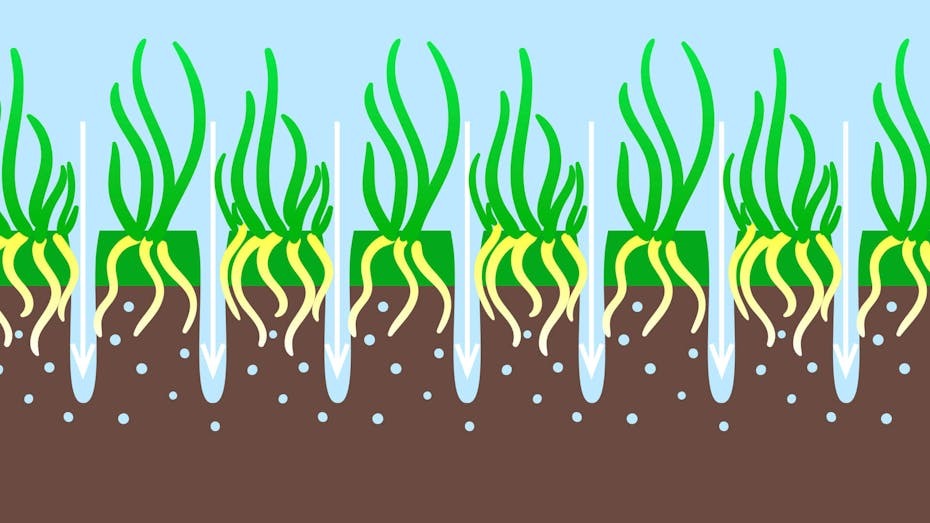
What is Lawn Aeration
Aerating is the procedure of getting air into the lawn soil. De-compaction is relieving the pressure between soil particles so they are less dense.
Aerating is the procedure of getting air into the lawn soil. De-compaction is relieving the pressure between soil particles so they are less dense. For all intents and purposes they are the same and result in getting more air in to the soil. It is these air spaces that partially fill up and store the rain water for use by the grass.
As well as relieving compaction, aeration also allows air, rain and nutrients to penetrate a hard surface, improves bacterial activity and helps reduce thatch. It also improves drainage from the surface, increases the water holding capacity and therefore stimulates rooting and root depth, giving a more drought tolerant lawn. If your lawn suffers from premature drying, poor drainage or moss invasion, then aeration will help.
However, if the lawn is old (20 years plus) and hasn't been aerated then the compaction will be so severe that aeration will not cure the problem. In this instance the only remedy is to dig over the lawn and soil to a depth of at least 15cm. This aerates the soil and removes the compaction enabling you to create a new lawn with all the benefits in ease of care, and improved health and looks that that brings.
Spiking is a common method of lawn aeration. However, stick a fork or use a lawn spiker or aerator on your lawn and you may make a hole, but where has the soil at the sides gone? The fork has squeezed it out of the way thereby compacting it!! Worth doing or not?
On light clay soils right through to very sandy soils you’ll be doing a worthwhile job. The ‘squeezing’ effect is minimised due to the fact the soil contains some sandy particles and they get nicely agitated, increasing the amount of air, and therefore partially relieving compaction. This is not the same for sticky or heavy clay soils. Here the ‘squeezing’ effect just moves the compaction problem with no discernable benefit. For these types of soil ‘coring’ using a hollow tine aerator is more appropriate. This is where hundreds or thousands of cores (or plugs) about 2” long and ½” in diameter are removed from the lawn surface. Unfortuately, the soil that benefits the most, sticky and heavy clays, quite often block the aerator rendering it useless. The only type of hollow tine aerator that seems to manage to do a reasonable job are the petrol powered drum aerators which can be hired.
It is also beneficial to hollow tine other soils though you may be wasting your time with very sandy soils where spiking is going to be the better method.